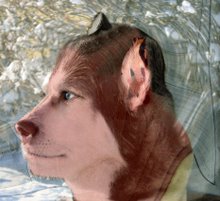"Pumpkin" is a concept. In fact, in Australia any winter squash is deemed a "pumpkin" no matter its looks, according to Wikipedia. And many other cultures don't place spherical orange squashes in a special category at all. A calabash is a calabash, it seems.
Most of my experience with the squash family has been growing squash, which I have bad luck with (squash borers); and cooking and eating squash. I like crook necked yellow squash, preferably with a few warts on them, but not overly large. Cooked with onion. And acorn squash. And lately I eat butternut squash often. Roasted, with or without butter. Salt.
But I didn't really get it. All these things - squash, gourds, pumpkins, calabash - are basically the same vegetable. I knew this intellectually, but I didn't ever think it through.

A lot of people will tell you that the pumpkins used for Jack o' lanterns are "the wrong kind" or "the wrong variety" for cooking with. At first I thought that is imprecise. Because what I have always known is that there is an ideal size for each kind of squash. A huge yellow squash is too tough, too seedy, and not good. A yellow squash that is too small and young will have no flavor. And the big orange spherical pumpkins have exceeded that ideal size.
The solution may be simple, I thought: Cook with smaller pumpkins. I thought there probably is a loss of flavor when pumpkins are bred and cultivated for large size only. In general the small pumpkins should taste better. But this wasn't exactly right.
Winter squashes, including pumpkins, have been bred differently, and should be always fully matured by the time they are picked. Jack o' lantern pumpkins have been bred for size. Other winter squashes and pumpkins have been bred for taste. Some pumpkins have been bred for large seeds, and some varieties have been developed specifically for the seed harvest, with no hulls growing on the seeds!
Unlike my usual habits, I have shamelessly ripped off these photos from the internet. Maybe I should photograph my own illustrations like I usually do. I apologize for the appropriation of these images.





3 comments:
I always used the meat from jack-o-lantern pumpkins in my pumpkin pies and never had any complaints. Quite the opposite. Put enough rum or bourbon in a pie and everybody loves it.
Likely true. My love of cinnamon and nutmeg has declined over the years (but I do like some molasses, i.c., brown sugar!) But I'm at the point where I want the very best flavors behind the spices. And I'd use bourbon more if I could keep it around. It has a way of vanishing.
I wonder how a good yellow squash pie would be received?
Post a Comment